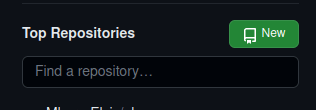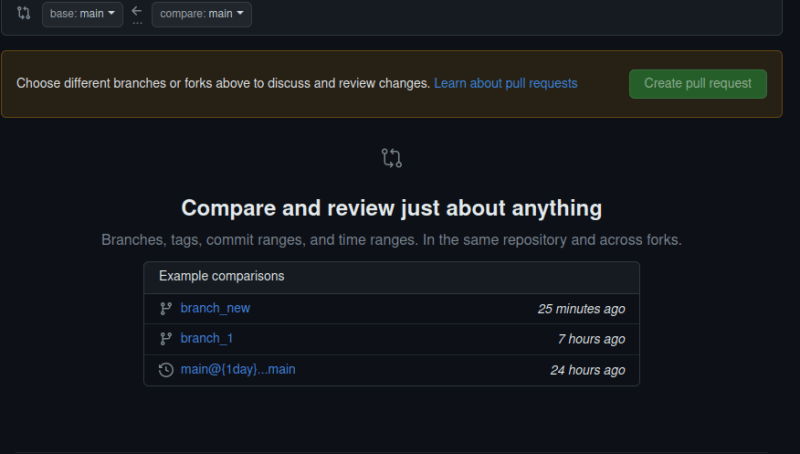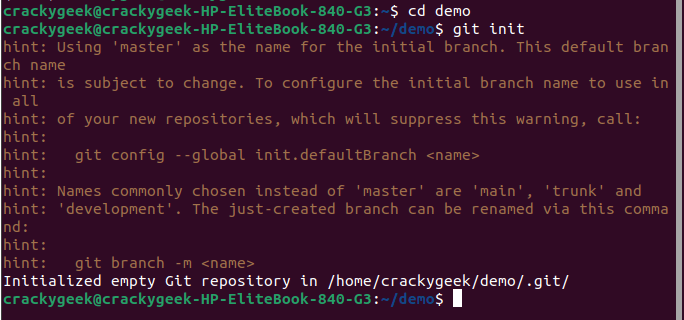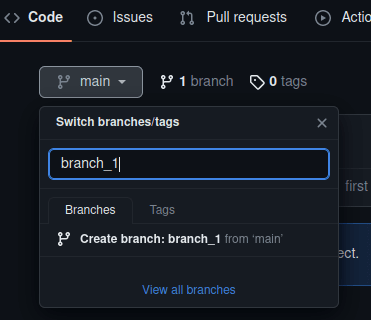What is GitHub
Github is a code hosting platform for collaboration and version control.
It facilitates social coding by providing a hosting service and web interface for git code repository.
What is version control
It is the practice of tracking and managing changes to software code.
Version control software keeps track of every modification to the code in a special kind of database.
Git is a version control.
The version control system assigns a unique hash code for every modification done to the source code.
Version Control Benefits
- History Tracking
- Collaborative history tracking
Github Terms
Installing git on linux
sudo apt install git-all
if you are on another system check out here
Configure user
set the username for the local repositories
git config --global user.name "[username]"
set the email to attach to the commits
git config --global user.email "[email]"
set the password
git config --global user.password "[password]"
Repository
A repository is a centralized location in Git where files and their version history are stored.
In other sense it's a directory that contains all the files and sub-directories associated with a project, along with the entire revision history of each file.
Branch
A branch is a parallel version of a repository.
The default branch is called master
Any other branch is a copy of the master branch at a particular time.
Each branch contains changes that are different from the main codebase i.e. the master branch
Benefits of using branches
- parallel development without disrupting the main codebase
- It facilitates collaboration across teams
Commits
These refer to the changes in a repository.
Each commit has a description/message why or what change was made.
Pull requests
They are very instrumental to enabling seamless collaboration.
With pull request you are proposing that your changes should be merged with the master branch.
They show content differences, changes, additions and subtractions in colors (red and green)
Pull requests are merged to the main branch by the repository owner or the code reiewer
Github Events
Now that we have a brief overview of what Github is all about, let's dive into some of the events :
- creating and deleting a repository
- pushing a code into a repository
- creating a branch
- opening and closing a pull request
- code reviewing
- merging
- opening and closing issues
- assigning issues
Creating a repository
Creating a repository alias repo
There are two ways of creating a repo
- github user interface
- creating from a folder
a. repo from github user interface
from github click the green button on the top-left

b. repo from a folder
You may want to make a existing folder in your local machine a repo.
In the terminal go to the existing project you want to start tracking.
Then enter the command below to initialize a folder as a repository.
This thus creates a new repository in the current directory.
You then use the command
git add .
This command is used to add all changes in the current directory and its sub-directories to the staging area (the temporary storage area in Git where you can prepare changes to be committed to the repository).
Instead if you want to commit selected files you can instead of git add . use:
git add filename
the command adds a file named filename to the staging area
or
git add file1 file2
incase of multiple files
To commit the changes in the staging area to the repository we use git commit command. Example:-
git commit -m "first commit in the repository"
the -m option allows you to specify a message for a commit.
This is often used as a brief summary of the changes that were made.
Benefits of a good commit message
- Enhance clarity of what changes were made
- Acts as a historical record of the changes made
- Facilitates collaboration among team members
- Helps in debugging as it helps identify which changes caused the errors/bugs
- A commit message can serve as documentation for the code changes
now let's rename the current branch to main
git branch -M main
this commands simply just renames the current branch to main.
The default branch is master
Now let's add a new remote repo named origin to the local git repo.
git remote add origin git@github.com:usename/new_repo
We now push our changes to the remote repository named origin
git push -u origin main
if you want to clone a repo from github to your local machine
you can use the command:
git clone url/to/the/repo
this creates a directory with same name as your repo with the project contents also
Following Github Flow
Create a branch
create a branch in your repository.
There are two ways of creating a branch to your repository
- from the github interface
- from the terminal
create branch from github interface
click on the dropdown on the left of your screen
write the name of your branch
then click on the part create branch:
create a branch from the terminal
Check the current branch using the command
git branch
create a new branch using the command
git branch <branch_name>
Now switch to the new branch using the command
git checkout <branch_name>
or
git checkout -b <branch_name>
Now you'll be making changes to the new branch instead of the main/master branch.
To list the branches present in the repo
git branch --list
You can commit and push your changes to the branch
Also you can be able to revert if a mistake is made
Deleting a branch
To delete a branch you use the command
git branch -d [branch-name]
Create a pull request
Creating a pull requests is vital especially in a collaboration environment.
Some pull requests require approval before merging it.
When you create a pull request, include a summary of the changes and the problem they solve.
On github web interface
navigate to the main page of the repository
in the branch menu, choose the branch that contains your commits

click on New pull request
You can choose the branch you want to create a pull request for

If no issues you can click on the Create pull request grren button
The repo owner or code reviewer will then review the pull request and merge it to the main branch.
Create the pull request using the CLI
To create a pull request we use the
gh pr create --assignee "@username"
or you can use "@me" to self assign the pull request
Synchronize changes
To synchronize your local repository with the remote repository on Github
git fetch
It downloads all history from the remote tracking branches
git merge
It combines remote tracking branch into the current local branch
git push
Uploads all local branch commits to Github
git pull
Updates your current local working branch with new commits from the corresponding remote branch
It is a combination of git fetch and git merge
Commit Changes
To list the version history for the current branch use the command
git log
To list the version history for a file, including renames
git log --follow [file]
To show content differences between two branches
git diff [first_branch] ... [second_branch]
Snapshots of the file in preparation for versioning
git add [file]
Redo Commits
To undo all commits after [commit], preserving changes locally
git reset [commit]
To discard all history and changes back to the specified commit
git reset --hard [commit]






Top comments (0)